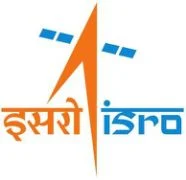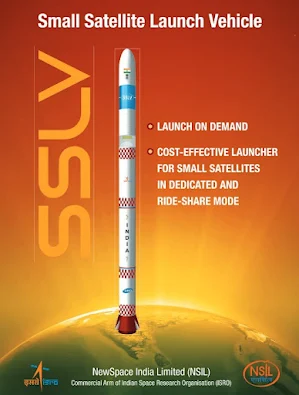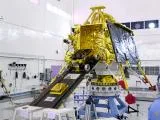ISRO's space missions scheduled for 2022
 |
| ISRO |
One of the expected missions, the PSLV-C52 rocket, successfully launched the Indian Space Research Organisation's EOS-04 earth observation satellite and two minor satellites into their target orbit on February 14, 2022. EOS-04 is a Radar Imaging Satellite engineered to deliver high-quality photos in all climate circumstances for sectors like agriculture, forestry, and plantations, as well as moisture levels and flood tracking. Let's see what else ISRO has planned for space enthusiasts in 2022.
GAGANYAAN
 |
| Gaganyaan mission |
The Gaganyaan mission's goal is to test the capacity of sending mankind into low earth orbit using space vehicle and safely returning them to Earth. In 2022, India's big mission, which intends to launch the first batch of Indian astronauts into space on an indigenously built spacecraft, would get a boost. At the start of the second half of 2022, ISRO will undertake a test vehicle flight to validate the 'Crew Escape System' performance, as well as Gaganyaan's maiden uncrewed mission.
Test flight profile
About 16 minutes after liftoff from the Satish Dhawan Space Centre (SDSC), Sriharikota, the rocket will inject the spacecraft into an orbit 300–400 km (190–250 mi) above Earth. When ready to land, its service module and solar panels will be disposed off before reentry. The capsule would return for a parachute splashdown in the Bay of Bengal.
Aditya L1
 |
| ADITYA L1 MISSION |
Aditya L1, India's first mission to explore the Sun, will begin in Mid 2022 after being postponed a year owing to pandemic restrictions. The Aditya-L1 mission will be placed in a halo orbit around the Lagrange point 1 (L1), which is around 15,00,000 kilometres from Earth. Aditya, which means'sun' in Sanskrit, will be ISRO's second prominent space mission, following the launch of its Mars orbiter in 2013.
The spacecraft will study coronal heating, solar wind acceleration, coronal magnetometry, origin and monitoring of near-UV solar radiation and continuously observe photosphere, chromosphere and corona, solar energetic particles and magnetic field of the Sun.
First dedicated Indian mission to observe Sun, it is planned to be launched in Sept/Oct 2022 aboard a PSLV-XL launch vehicle
Chandrayaan 3
In the third quarter of 2022, ISRO will execute the major Chandrayaan-3 mission. The Chandrayaan-3 builds on the findings of the first Chandrayaan mission, which was launched in October 2008 and found indications of water on the lunar surface. The third lunar mission arrives two years after Chandrayaan-2 crashed into the Moon's far side. The lander for Chandrayaan-3 will have only four throttle-able engines, unlike Vikram on Chandrayaan-2 which had five 800 Newtons engines with a fifth one being centrally mounted with a fixed thrust. Additionally, the Chandrayaan-3 lander will be equipped with a Laser Doppler Velocimeter (LDV).
Small Satellite Launch Vehicle (SSLV)
 |
| Small Satellite Launch Vehicle (SSLV) |
ISRO is developing the SSLV as India becomes a hotspot for launching satellites into low-Earth orbit. First mission will take place in the first quarter of 2022, SSLV will be able to deliver 500 kilogrammes of cargo to a 500-kilometer planar orbit. The PSLV, on the other hand, can carry a payload of up to 1,750 kilogrammes into a 600 km high SSO. The Centre has funded Rs 169 crores for the creation of SSLV, a three-stage all-solid spacecraft that can hold several satellites, including nano and micro satellites.
The SSLV was developed with the aim of launching small satellites commercially at drastically reduced price and higher launch rate as compared to Polar Satellite Launch Vehicle (PSLV). The development cost of SSLV is ₹169.07 crore (US$22 million) and the manufacturing cost is expected to be ₹30 crore (US$4.0 million) to ₹35 crore (US$4.6 million).

No comments:
Post a Comment